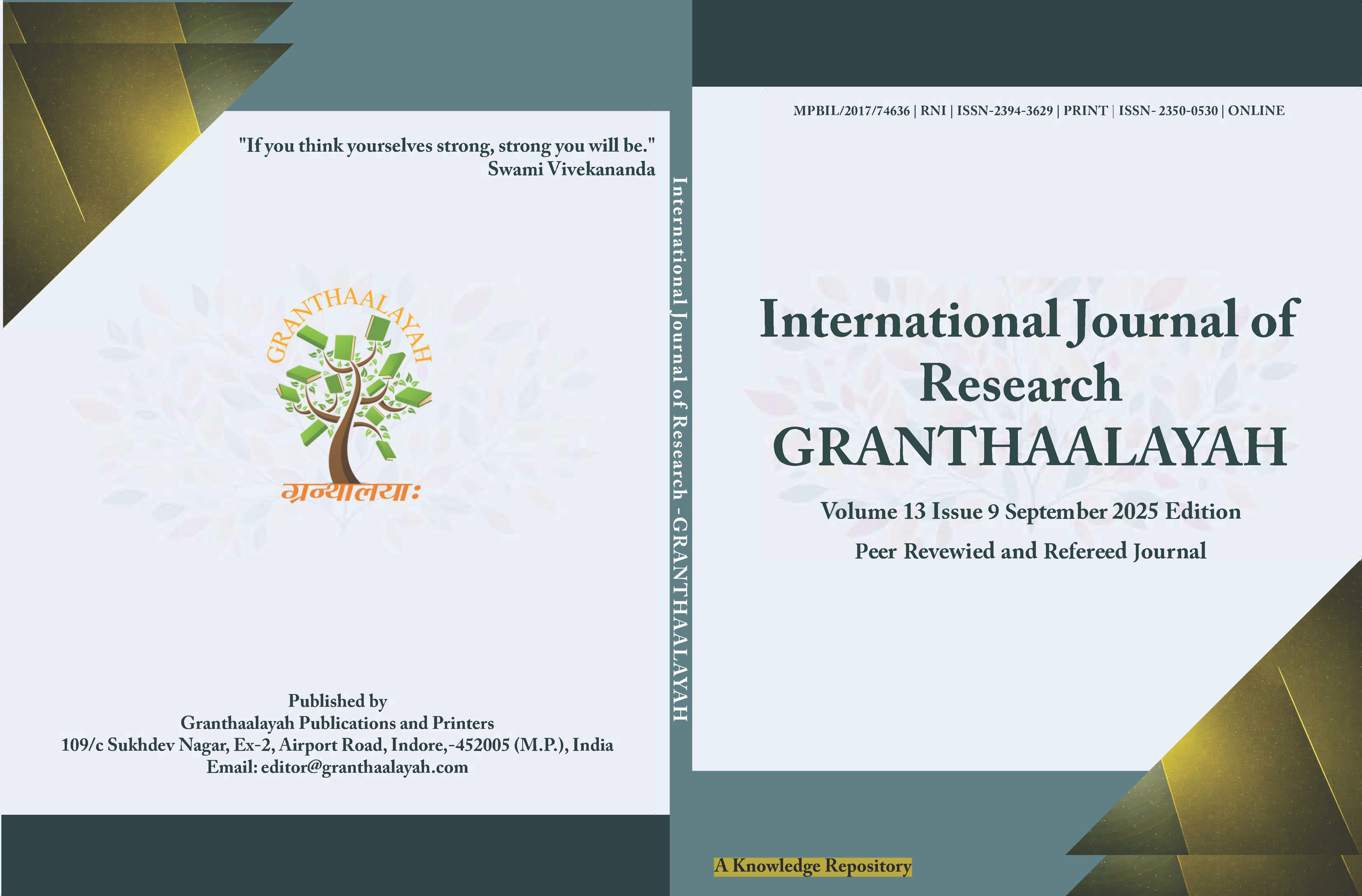THE SYSTEM OF JUSTICE AND POLICING IN MAHARAJA SURAJMAL’S REIGN
DOI:
https://doi.org/10.29121/granthaalayah.v13.i9.2025.6377Keywords:
Maharaja Surajmal, Bharatpur, Jat Kingdom, Justice Administration, Policing, Mughal Governance, Rajputana, Customary Law, Local PanchayatAbstract [English]
This paper examines the administration of justice and law enforcement in the Jat kingdom of Bharatpur during the reign of Maharaja Surajmal ( 1707–1763). Drawing on historical evidence and comparative analysis with neighbouring polities, it explores Surajmal’s judicial institutions, customary law, and policing mechanisms. Sources on Mughal and Rajput governance are used to contextualise Surajmal’s system, which adopted many features of the fading Mughal model while retaining local Jat traditions. The study finds that justice in Surajmal’s state was administered through a hierarchy of village panchayats and district courts under the Maharaja’s final authority, with influences from Islamic and customary law. Policing relied on traditional village watchmen and military patrols rather than a modern police force. In comparison, the Mughal Empire maintained a more formal network of qāzī states similarly combined local customs with imperial norms. A table of estimated population sizes highlights the scale of Surajmal’s Bharatpur relative to Mughal and Maratha domains (Table 1). The analysis incorporates archival population data and normative descriptions of legal practice, presenting a detailed picture suitable for scholarly appraisal.
Downloads
References
Alam, M., & Subrahmanyam, S. (1998). The Mughal State 1526–1750. Oxford University Press.
Bayly, C. A. (1983). Rulers, Townsmen and Bazaars: North Indian Society in the Age of British Expansion 1770–1870. Cambridge University Press.
Chander, N., & Kesharwani, P. K. (2022). A Study on Mughal Judicial System in India. Globus Journal of Progressive Education, 11(2), 169–178.
Chandra, S. (2004). Medieval India: From Sultanat to the Mughals, 1526–1748 (2). Har-Anand Publications.
Gupta, A. D. (2001). Caste, Society and Politics in India from the Eighteenth Century to the Modern Age. Cambridge University Press.
Habib, I. (1999). The Agrarian System of Mughal India 1556–1707 (3rd ed.). Oxford University Press.
Muzaffar Alam. (1993). The Crisis of Empire in Mughal North India: Awadh and the Punjab, 1707–1748. Oxford University Press.
Richards, J. F. (1995). The Mughal Empire. Cambridge University Press.
Sarkar, J. N. (1984). Fall of the Mughal Empire (1–4). Orient Longman.
Sharma, G. N. (1954). Social life in Medieval Rajasthan. Agra University.
Singh, K. (1965). A History of the Jats. Mayur Publications.
Spodek, H. (2022). India in the world; the world in India 1450–1770. Education About Asia, 27(1), 72–77.
The Editors of Encyclopædia Britannica. (2022). Bharatpur. In Encyclopædia Britannica. https://www.britannica.com/place/Bharatpur
Thelen, E. M. (2021). Disputed Transactions: Documents, language, and Authority in Eighteenth-Century Marwar. Indian Economic and Social History Review, 58(4), 533–560. DOI: https://doi.org/10.1163/15685209-12341553
Published
How to Cite
Issue
Section
License
Copyright (c) 2025 Monica Singh, Dr. Hridayesh Kumar

This work is licensed under a Creative Commons Attribution 4.0 International License.
With the licence CC-BY, authors retain the copyright, allowing anyone to download, reuse, re-print, modify, distribute, and/or copy their contribution. The work must be properly attributed to its author.
It is not necessary to ask for further permission from the author or journal board.
This journal provides immediate open access to its content on the principle that making research freely available to the public supports a greater global exchange of knowledge.






























